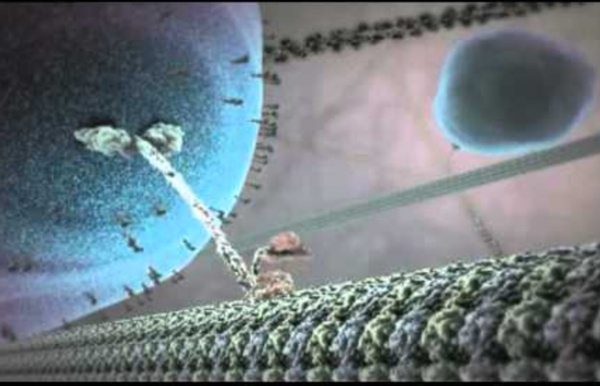



http://www.youtube.com/watch?v=wJyUtbn0O5Y
Related: La cellule vivante • Science PostsHow an outsider bucked prevailing Alzheimer's theory, clawed for validation Robert Moir was damned if he did and damned if he didn’t. The Massachusetts General Hospital neurobiologist had applied for government funding for his Alzheimer’s disease research and received wildly disparate comments from the scientists tapped to assess his proposal’s merits. It was an “unorthodox hypothesis” that might “fill flagrant knowledge gaps,” wrote one reviewer, but another said the planned work might add little “to what is currently known.” A third complained that although Moir wanted to study whether microbes might be involved in causing Alzheimer’s, no one had proved that was the case. As if scientists are supposed to study only what’s already known, an exasperated Moir thought when he read the reviews two years ago. He’d just had a paper published in a leading journal, providing strong data for his idea that beta-amyloid, a hallmark of Alzheimer’s disease, might be a response to microbes in the brain.
Cell Size and Scale Some cells are visible to the unaided eye The smallest objects that the unaided human eye can see are about 0.1 mm long. That means that under the right conditions, you might be able to see an ameoba proteus, a human egg, and a paramecium without using magnification. A magnifying glass can help you to see them more clearly, but they will still look tiny. Elizabeth Lee Hazen (1888-1975) and Rachel Brown (1898-1980) Narrow Your Results Refine Your Results Filter Your Results Expeditions Information Close Browse records and papers documenting scientific and collecting expeditions either affiliated with the Smithsonian, or with which Smithsonian researchers participated. Pre-set filters help narrow searches by geographic regions predominantly represented in expedition records.
Reclaiming lost calories: Tweaking photosynthesis boosts crop yields What if your ability to feed yourself was dependent on a process that made a mistake 20 percent of the time? We face this situation every day. That’s because the plants that produce the food we eat evolved to solve a chemistry problem that arose billions of years ago. Plants evolved to use carbon dioxide to make our food and the oxygen we breathe – a process called photosynthesis.
Lord, Save Me From The Krebs Cycle : Krulwich Wonders... Little kids love dinosaurs, bugs and exploring the woods. Science doesn't scare them; they find it fun — until 9th grade. That's when most of us take our first biology class and everything changes. That's when we learn, not because we choose to, but because we know it might be on The Test, and too often, curiosity gets replaced by fear. For me, of all the fear-inducing horrors of 9th grade biology, the monster in the pack, the highest mountain of meaningless memorization is — do you remember this? Who wants to summarize using foldables??? I love foldables. They can take the most mundane of material and liven it up so that the kids are meaningfully engaged and learning. As the year has progressed, I find myself using more and more of these little pieces of paper in my classroom. My latest craze has been to use them in science.
Fake science on fake fish from James Cook Uni? Third World Science with First World Funding Is James Cook University a grants machine or a research institute? James Cook University reviews ex-student’s ‘fishy’ findings, by Graham Lloyd, The Australian THE EFFECT OF CONCENTRATION ON THE RATE OF DIFFUSION Lab: The Effect of Concentration on the Rate of Diffusion Free biology lab perfect for biology or life science students in grades 8-12 PURPOSE: This experiment will explore the concentration gradient by measuring the rate of diffusion in a number of theoretical cells.
Watch a single cell become a complete organism in six pulsing minutes of timelapse Aeon email newsletters are issued by the not-for-profit, registered charity Aeon Media Group Ltd (Australian Business Number 80 612 076 614). This Email Newsletter Privacy Statement pertains to the personally identifying information you voluntarily submit in the form of your email address to receive our email newsletters More generally, when visiting the Aeon site you should refer to our site Privacy Policy here. This Email Newsletter Privacy Statement may change from time to time and was last revised 18 May, 2020. By clicking ‘subscribe’ you agree to the following:
Anatomia Vegetal Visualising the Cell Nucleus Leaf growth Cell growth Cell organelles and cytoplasm visualisation Cell membrane and cell wall growth Dicotyledon* stem cross-section